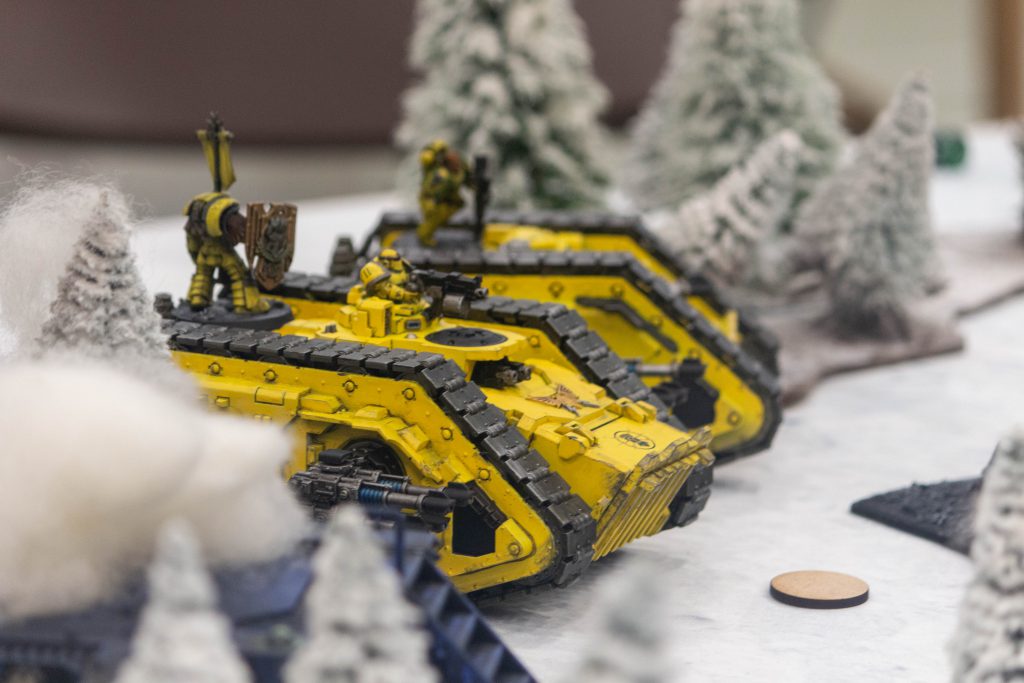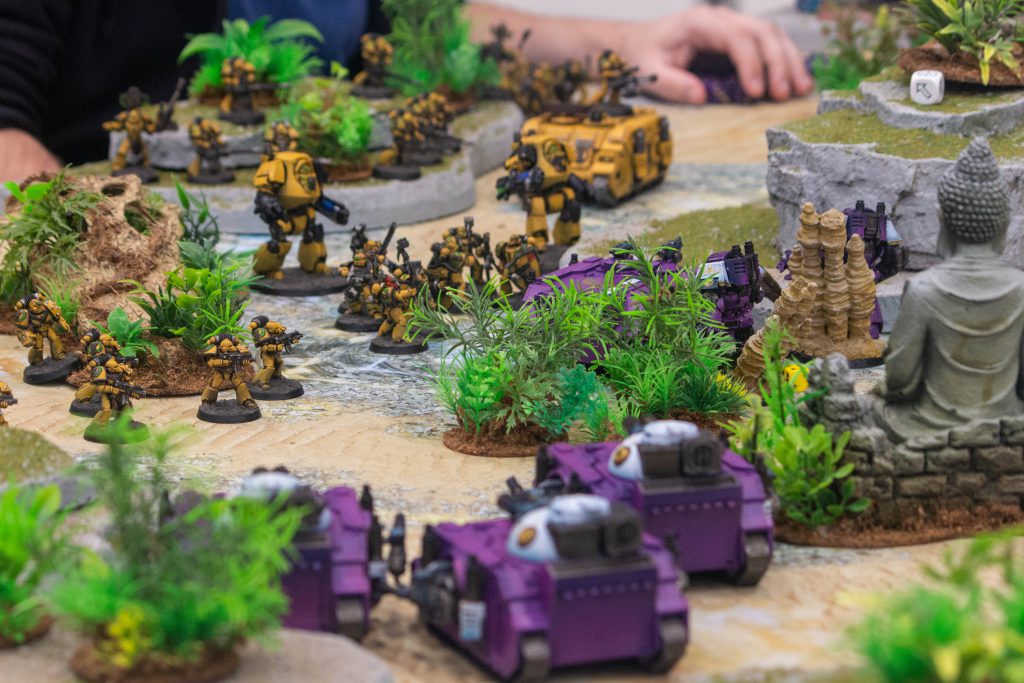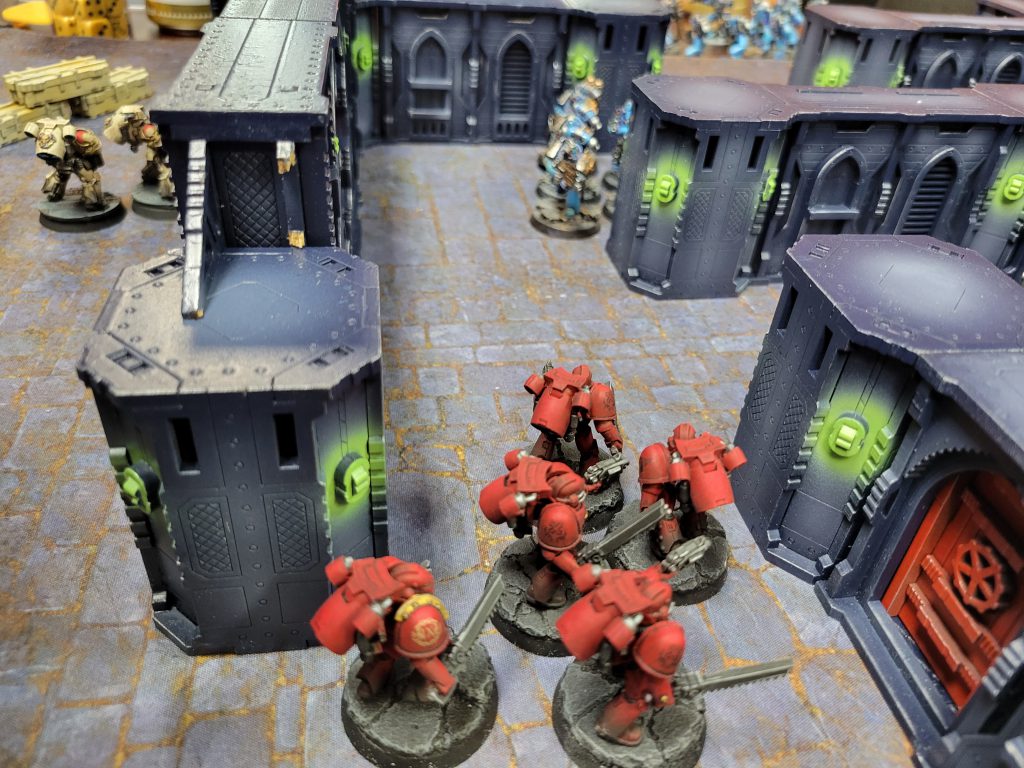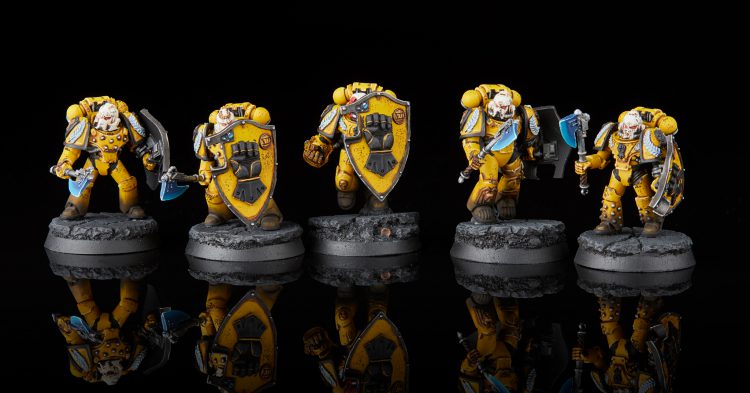Welcome to Horus Heresy Tactica, our series that provides a deep dive in a specific mechanic, interaction or aspect of play in Warhammer: the Horus Heresy.
Deciding what to add to your list is a challenging proposition if you’re new to Horus Heresy (or indeed if you’re not but still adjusting to the realities of 2nd Edition) – what exactly does a good list look like? Can I bring a narrative and flavourful list that still stands up to scrutiny? At what point am I bringing a list that makes me look like I’m trying too hard and will stop people having fun? It can all be difficult to judge and so over the next few weeks we’re going to dive into List Building in all its forms.
This week we’re going to tackle list sizes and when you’d want to run them. We think about how we can tweak the game to support them and what game sizes we should probably be playing long term. Next week we’ll hone in on the key components of a list and what they do and then move on to looking at how much of each of them you need. Finally in part three we’ll be discussing the dreaded skew list, and look at what over and under tuned lists are like in this edition.

The Problem of Points
If you’re coming over to Horus Heresy from Warhammer 40,000 then you may have this inbuilt expectation in your bones that a “full game” clocks in at 2000pts and a “small game” is 1000-1500pts. Unfortunately these expectations are just not accurate for Horus Heresy, and this can lead to a lot of folks playing their starter games at very small points values and getting a confused impression of how the game works. You can absolutely get a sense of the core mechanics at smaller point values, but the game really struggles to work coherently at all under 2000pts, and even then it’s cutting it fine. The vast majority of games played are 2500pts at least, with 3000pts being the standard size and the one the game is designed to work at.
Why does this matter? Well there are a few reasons:
- You have a certain number of things you have to include in an army to be able to meaningfully interact with an enemy army (more on this in a bit) and it can be a challenge to fit them all in at 2000pts. You absolutely can do it, but it takes a lot more work, and it restricts your choices a lot more. Worse, legions with particular unit types or Rites of War giving certain rules to particular units are going to have a wild oversized advantage. This isn’t just “skew lists are difficult to deal with”, but that some kinds of lists are just extremely hard to manage at lower points values because they can combine roles into one unit when you would need to take three different ones to cover those roles. That’s always an advantage (that’s why Rites of War, etc are good) but at lower points values that advantage is huge
- Reactions get more valuable at smaller points values as a much larger proportion of your army can react at any one time. Sure, the same number of units are getting to use that reaction as in larger games, but that is much more important if those units constitute a quarter of your entire force. In a smaller game a single reaction fire or overwatch can absolutely destroy your opponent’s forces because there is less of everything available.
- It’s much harder to screen, block and otherwise limit enemy manoeuvre. You can play smaller points values on a smaller board but if you don’t then there’s going to be huge amounts of space to manoeuvre and this can skew things towards some kinds of army more than others. The value of units that get to ignore intervening models and terrain when moving (like jump packs and jetbikes) or shooting (like barrage weapons) drops significantly when you can just go around it easily or engage in a way that doesn’t need you to.
In general you should consider 2000pts as your floor for playing a game of Horus Heresy – any smaller than this and lots of problems are going to start creeping in. Going forward you should not really consider that you’re playing Horus Heresy as envisioned by the designers until you’re playing with 2500pts or preferably 3000pts.

Playing Smaller Games
This can be intimidating to newcomers (though you’ll be surprised how fast those points go when you’re spending them) and you may want to play some smaller games first. The best option here is really Zone Mortalis (the rules for which were in White Dwarf and fuller rules are promised in the future) which is intended for smaller sizes and tight corridor fighting, dramatically limits a lot of the worst skew lists and also has new reactions to replace the core ones. If you’re not familiar with Zone Mortalis, it’s a game mode where you play elite groups of fighters clashing in corridors, tunnels or other confined spaces. It’s intended to emulate the ship boarding actions of the Horus Heresy novels and it can be a huge amount of fun.
However, it’s definitely a distinctly different kind of game to standard “Crusade” Heresy. It can feel very odd to some people to play, effectively, a completely different game mode when you’re starting out – not least because you’re learning different reactions, different tactics and norms and tuning and building your lists in different ways.

If you don’t want to play Zone Mortalis but are fixed on 1000-1500pt games then I’d recommend:
- Playing on a 4’x4′ table
- Not allowing either player to use Rites of War and carefully limiting (or just banning outright) legion specific units
- Reducing your reaction allocation to 1 per turn (rather than 1 per phase) with the free one in a single phase from your Warlord Trait as normal
This should help smooth out the roughest edges of the game at this point level. You might find it a little restrictive (and you’re welcome to ignore my recommendations of course) but it will certainly lead to more fun games in general. Rites of War are tricky in this situation, but trickier are legion specific units. The problem is some of them are absolutely fine, but others (I’m looking at you, Phalanx Warders) can cause enormous problems at smaller game sizes because they just do too much. They can fit into too many roles and make the lists so point efficient at smaller sizes it’s hard to compete.

Onto the Big Time
Next time we’ll start looking at full-sized games of Heresy – that’s 2000pts at the very lowest end, and really focusing in at 3000pts. We’ll consider what capabilities different units have, and how to build an army that can “take all comers”. Any thoughts or feedback? Leave a comment below or email us contact@goonhammer.com.


